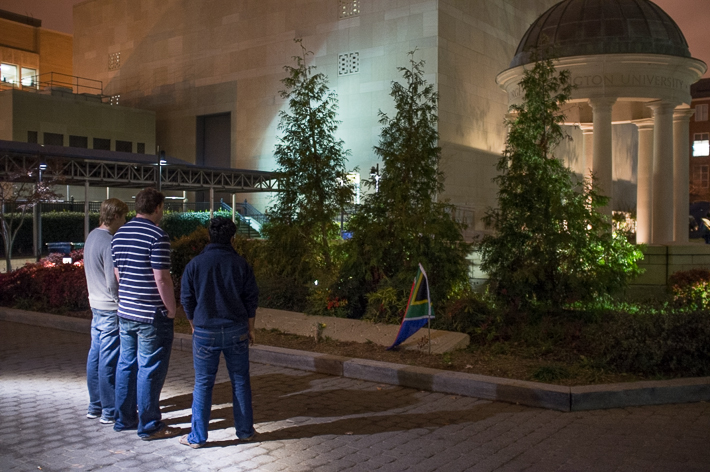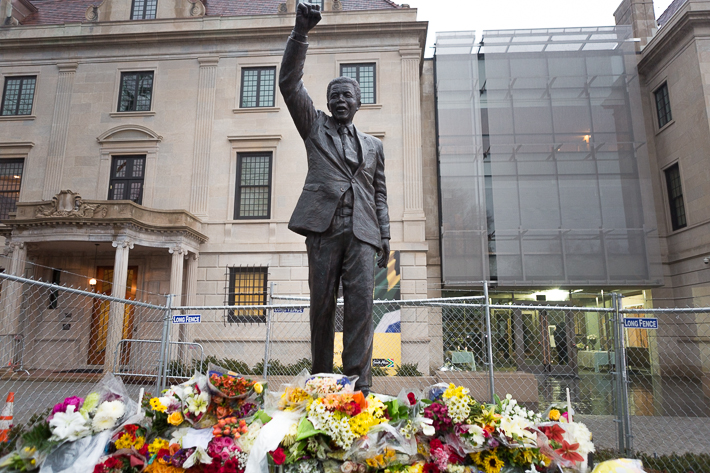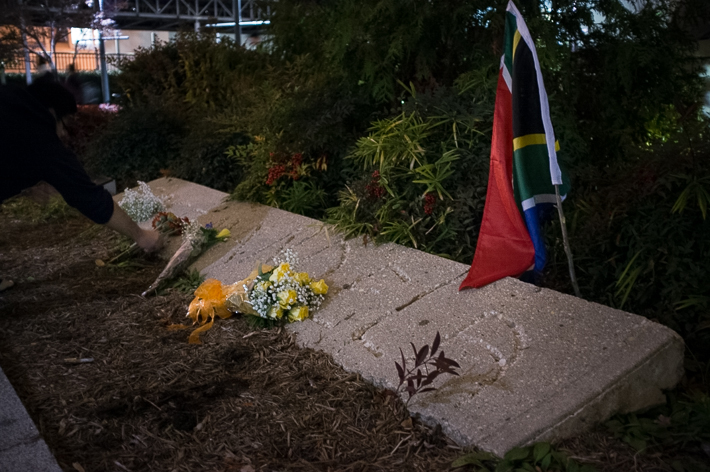Following the news of Nelson Mandela’s death on Thursday, members of the George Washington University community laid flowers and solemnly bowed their heads in front of the “Free Mandela” sidewalk slab that resides in Kogan Plaza, as
they remembered the life and legacy of the former South African president.
The historic sidewalk slab is a symbol of GW students’ commitment to social justice and a reminder of the political struggles and turmoil during the mid-1980s, when activists were fighting to end apartheid in South Africa, said Bernard Demczuk,
assistant vice president for District of Columbia relations and professor of African American history.

From 1984 to 1986, hundreds of Americans—including GW students—held political demonstrations at the South African Embassy in Northwest Washington, D.C., urging Congress to pass a sanctions bill that would cease trade relations with the country
until Mr. Mandela was released.
In 1985, the alleyway that runs through Kogan Plaza was being laid with a new layer of fresh cement. While it was drying, GW students etched “Free Mandela” into the slab. When Kogan Plaza was reorganized 10 years ago, the slab was preserved.

Dr. Demczuk said Mr. Mandela’s death is a chance for people young and old to learn about the leader’s commitment to freedom, democracy and justice.
“Once a prisoner and then a president, and once a protestor and then a prophet, Mr. Mandela continued to inspire throughout his life,” Dr. Demczuk said.

South African Ambassador Ebrahim Rasool and D.C. Mayor Vincent C. Gray, B.S. '64, announced a week of mourning for Mr. Mandela in the District. The South African Embassy, 3051 Massachusetts Ave. NW, will host candlelight prayer vigils at 7 p.m. through Tuesday at the bronze, Mandela statue, which was unveiled in September. Crowds have gathered at the statue all weekend to honor Mr. Mandela, placing flowers at its feet.


